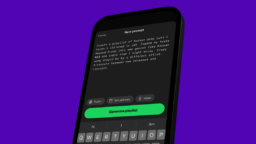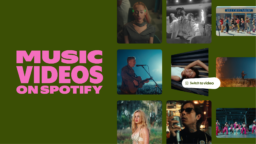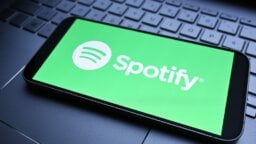As part of its on-going podcast push, Spotify has launched a new tool to let radio broadcasters turn their audio content into on-demand podcast content.
Broadcast-to-Podcast (B2P) is now available for any publisher with an account on Megaphone. Spotify bought Megaphone, a podcast advertising platform for a reported $235 million in cash in November 2020.
Megaphone lets enterprise-level podcasters and media companies use tools to publish, monetize, and measure their audio content.
B2P’s launch follows Spotify’s purchase of Australia-based podcast technology platform, Whooshkaa, in December 2021.
“With the launch of our broadcast-to-podcast technology within Spotify’s enterprise podcast platform Megaphone, broadcast publishers will be able to connect with previously hard-to-reach audiences.”
Emma Vaughn, Spotify
In February 2022, Spotify acquired two more podcast companies: Podsights, a podcast advertising measurement service, and Chartable, a podcast analytics platform.
Spotify’s Global Head of Advertising Business Development & Partnerships, Emma Vaughn, said Spotify ventured into B2P as radio listening has gradually shifted from over-the-air to streaming.
From 2019 to 2022, the time people spent listening to broadcast radio online in the US rose 50%.
“Similar to TV, busy consumers want to listen to their favorite audio content on their own schedule. This partly explains the tremendous growth of the podcast industry—creators, publishers, and platforms are responding to the demand from audiences. At the same time, there are more ways for people to listen thanks to a high adoption of devices like smart speakers, smartwatches, and more,” Vaughn said.
Spotify’s new B2P service no longer requires technical knowledge to use. Content creators will only have to set up their Megaphone account to create new podcast episodes from previously broadcasted content.
B2P helps automate the entire process of converting broadcasts to podcasts for publishers, says Vaughn.
Spotify says B2P will help radio publishers reach new audiences. In the fourth quarter of 2022, Spotify added another 10 million net Premium subscribers, taking its global paying audience to 205 million.
“This massive global audience of young, highly engaged—and, most importantly—culturally influential listeners have a broad reach, purchasing power, and a willingness to forge intimate connections with creators,” said Vaughn.
“We reach more than 50% of Gen Z and millennials in the U.S. on Spotify, and publishers are taking note. With the launch of our broadcast-to-podcast technology within Spotify’s enterprise podcast platform Megaphone, broadcast publishers will be able to connect with previously hard-to-reach audiences. This especially applies to Gen Z, who, according to Pew Research, prefer to get their news through digital channels like podcasts,” Vaughn continued.
The sharpened focus into podcasts came despite Bloomberg reporting in January that Spotify has decided to veer away from its podcasting strategy. The news outlet noted that Spotify lost 160 million euros in the first nine months of 2022 even as the company attracted tens of millions of people to podcasts on the platform.
However, Spotify now says it is bullish on podcasting, with podcast ad spending forecast to hit almost $2.2 billion this year.
“Once the broadcast-to-podcast tech converts the content to a streaming format, ad marker locations are automatically identified, and users have the flexibility to either replace or remove the identified ad locations based on their placement in the broadcast stream,” Vaughn said.
Music Business Worldwide





